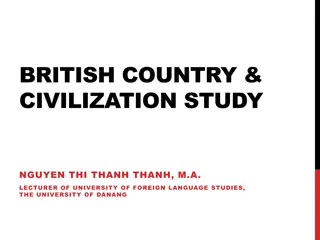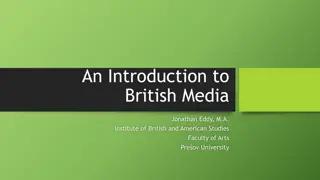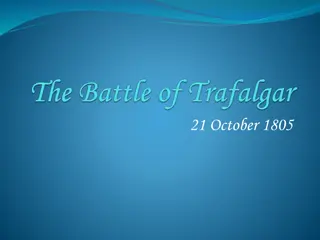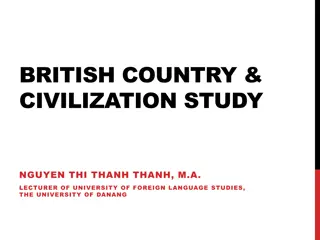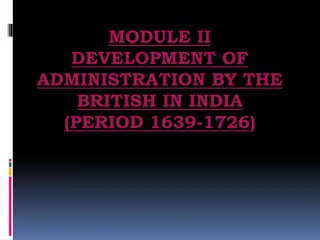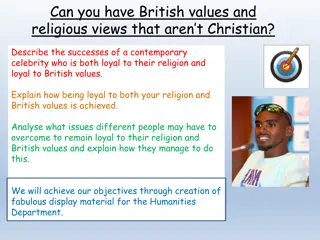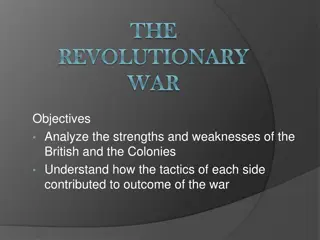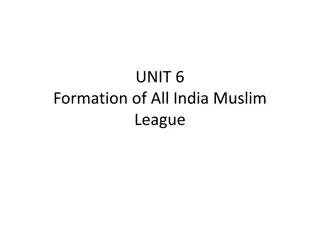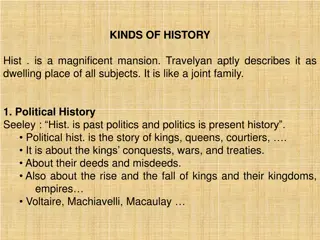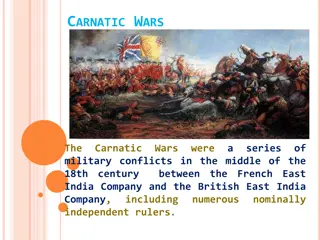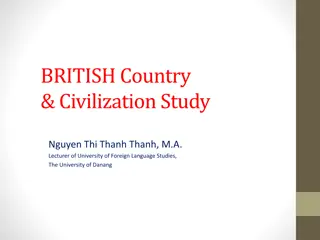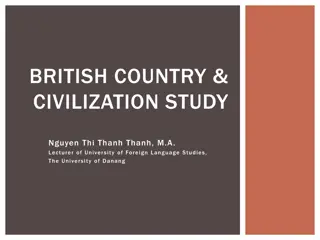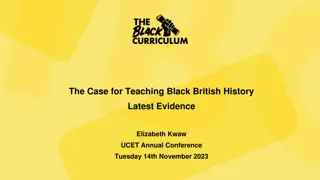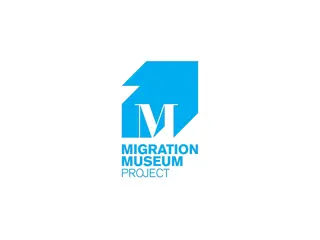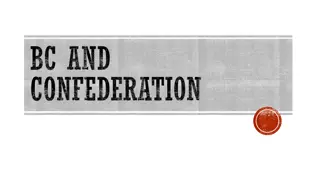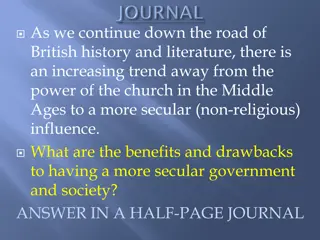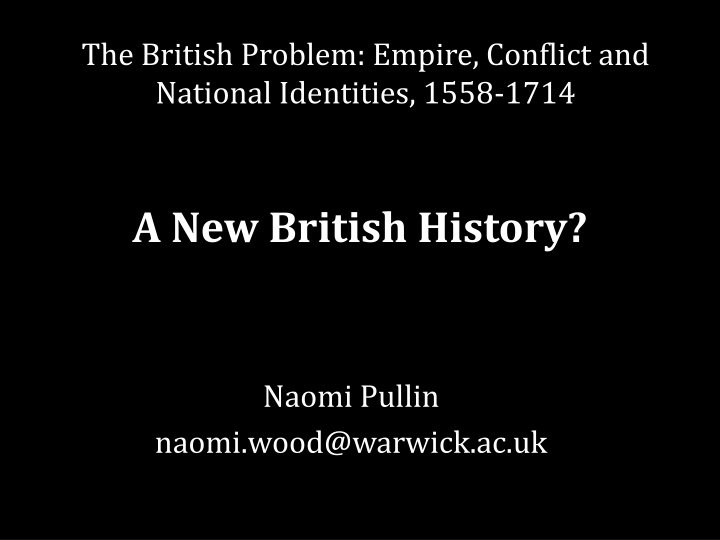
Unraveling British Identity and Nationhood: A Historical Perspective
Delve into the complexities of British identity and nationhood from 1558-1714, exploring key themes, theories, and the evolution of cultural and legal notions of nationhood. Discover how England, Ireland, Scotland, and Wales intertwine in the Atlantic Archipelago, and investigate the theories on nation-building through the lenses of culture, ethnicity, and historical foundations.
Download Presentation

Please find below an Image/Link to download the presentation.
The content on the website is provided AS IS for your information and personal use only. It may not be sold, licensed, or shared on other websites without obtaining consent from the author. If you encounter any issues during the download, it is possible that the publisher has removed the file from their server.
You are allowed to download the files provided on this website for personal or commercial use, subject to the condition that they are used lawfully. All files are the property of their respective owners.
The content on the website is provided AS IS for your information and personal use only. It may not be sold, licensed, or shared on other websites without obtaining consent from the author.
E N D
Presentation Transcript
The British Problem: Empire, Conflict and National Identities, 1558-1714 A New British History? Naomi Pullin naomi.wood@warwick.ac.uk
Focus of this lecture In two parts: 1. Practical introduction to the course 2. Conceptual themes and theories: What constitutes British identity and nationhood? British history Background to England, Ireland, Scotland and Wales at start of period Key themes underpinning this course
About this course All information you will need is on the weekly seminar pages on the module website: http://www2.warwick.ac.uk/fac/arts/history /students/modules/british_problem/progra mme/
British Identity and Nationhood Teapot and cover C.1765, manufactured in Worcester, England, attributed to James Giles. Victoria and Albert Museum London.
British Isles 1558-1714 Sometimes called an Atlantic Archipelago Covers 150 years: From coronation of Elizabeth I in 1558 To death of Queen Anne in 1714
Writing a history of the nation Linked to the professionalization of history as a discipline. Two ideas underpin modern idea of nationhood: 1. As a cultural identifier: denotes belonging; distinguishing element of human identity 2. As a legal entity: a nation state = sovereign legal authority
Theories of nationhood Is nation principally a phenomenon of the modern world? What is the relationship between nationhood and ethnicity? Can a nation be artificially put together, or does it need to rest on ancient social and cultural foundations?
Theories of nationhood Anthony Smith nations needs common ethno-cultural core, ethnie . Benedict Anderson imagined communities : nations the product of the modern world and changing patterns of communication. Eric Hobsbawm nations the product of power elites and state formation.
The problem of British history Linda Colley, Britons: Forging the Nation (1992) Britain an artificial, nation, forged by C18th imperial state. British history therefore a problematic concept for Early Modern period. AJP Taylor argues that British history an anachronistic concept before establishment of United Kingdom.
The New British History Key historians J.G.A. Pocock, John Morrill, Brendan Bradshaw. Pockock aimed to reinvest with meaning the concept of a shared British history; to find framework for writing British history before establishment of the British state in 1707. Argue that British history meaningful because of history of interaction and movement of people around Atlantic Archipelago . Events in one domain influence events in another e.g. throne of England taken by a Welshman in 1485 and a Scotsman in 1603.
Creation of a composite monarchy in Britain Aristocratic dynasties rule Anglo-Scottish borders e.g. Neville, Percy, Douglas families. Wales controlled by c. 130 Anglo-Norman marcher lords after 1282. Ireland government after 1177 centred on the Pale, controlled by Anglo-Norman magnates esp. Fitzgerald earls of Kildare and Desmond. North and West of Ireland ruled by Gaelic clans e.g. O Neill (Ulster), O Brien (County Clare)
Cultural and ethnic division in Scotland Four separate languages still spoken in Scotland by c. 1450. Emerging division of Lowlands (Anglophone) and Highlands (ruled by Gaelic-speaking clans). 1521 John Mair, History of Greater Britain: Among the Scots we find two distinct tongues, so we likewise find two different ways of life and conduct . Highland power held especially by MacDonald Lords of the Isles.
1. Royal centralisation in England and Scotland pre-1558 1496 James IV of Scotland abolishes the Lordship of the Isles 1536-1543 Henry VIII and Thomas Cromwell enact legal and political union of England and Wales: abolish powers of the marcher lords. 1541 Centralisation in Ireland: English army and administration imposed in Dublin; policy of surrender and regrant .
2. A Game of Thrones: Anglo- Scottish rivalry English monarchs had claimed rights to throne of Scotland since reign of Edward I in 13th century. 1544-5 Rough Wooing : Henry VIII tries to force Scottish noblemen into accepting marriage of (English) Prince Edward to (Scottish) Queen Mary. 1559-1587 - Scottish queen Mary Stuart (Mary Queen of Scots) claims throne of England against Elizabeth I.
3. Religious Divisions Impact of the European Reformations from 1517 division of Christian world into rival Catholic and Protestant camps. Religious divisions reflect old cultural and ethnic dividing lines. BUT also create the opportunities for new alliances to be formed. Greatly influenced by developments in Europe.
4. Influence of Europe Must also acknowledge the influence of rival kings and emperors on British politics. People in British Isles maintain European allegiances and identities esp. over religion. Effect seen in 1689 when William of Orange takes throne of British kingdoms; 1714 when George I succeeds Queen Anne.
5. Growth of an American Empire Britain part of a vast and expanding imperial dominion British pursue policy of Atlantic expansion from c.1585 in competition with Spain Need to see American colonies as part of the British polity.
Conclusions Events in history of Early Modern England, Scotland, Ireland, Wales and North America can only be fully understood when placed within wider British context. A history of the interaction between peoples customs and traditions. Not just a history of English domination, nor a history of four (even five) separate nations .



